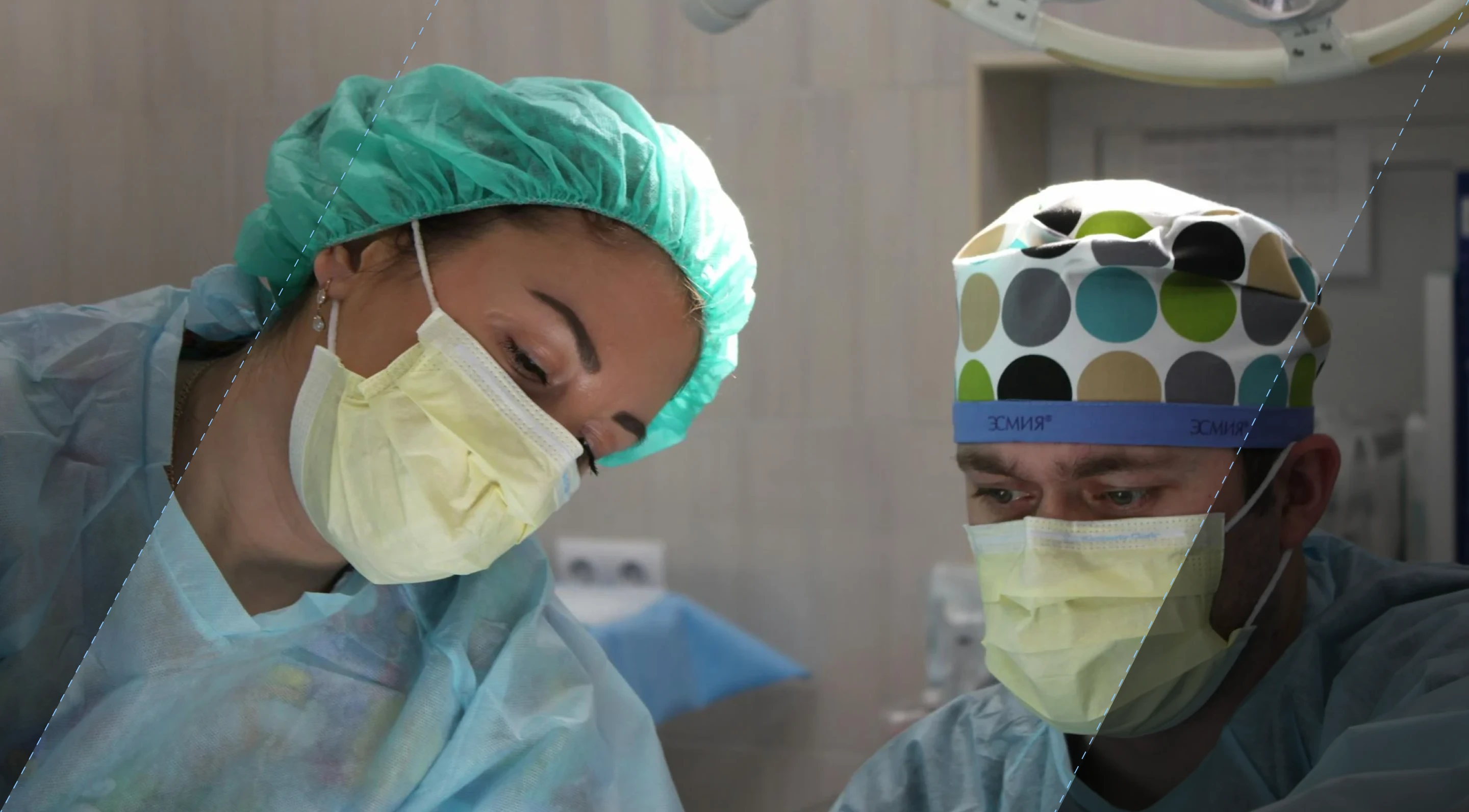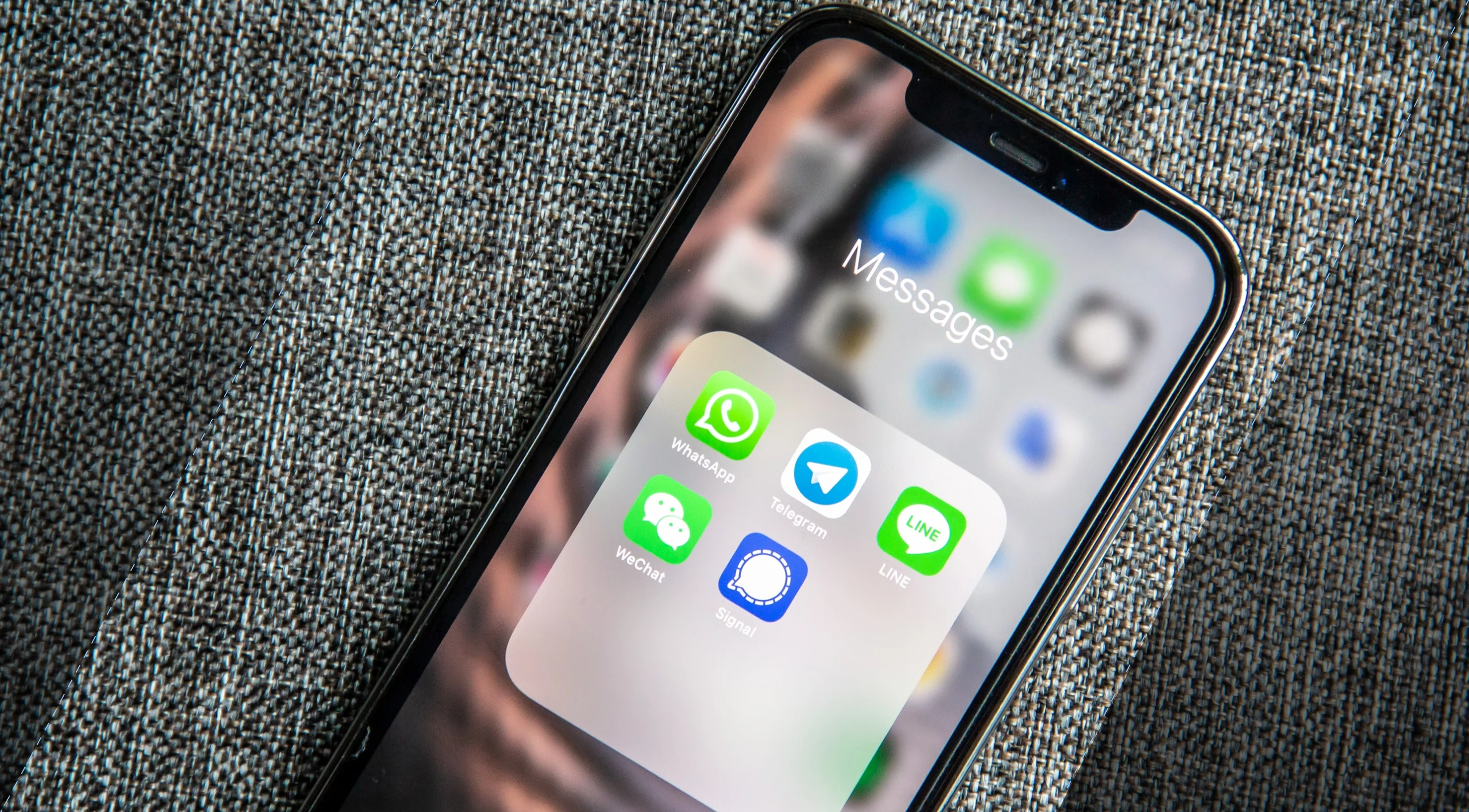SHARE
Internet of Things (IoT) in Healthcare

Contents
Contents
The integration of Internet of Things (IoT) technology into healthcare systems is revolutionizing patient care, treatment processes, and medical research. IoT refers to the network of interconnected physical devices embedded with sensors and software that collect and exchange data. In healthcare, IoT is enabling remote monitoring of patients, enhancing the efficiency of medical facilities, and promoting personalized treatment plans. In healthcare, IoT is frequently referenced as IoMT or the Internet of Medical Things.
Key Takeaways:
- IoT technology is transforming healthcare, improving patient care and treatment processes.
- IoT promotes personalized treatment plans by continuously collecting and analyzing patient data.
- IoT in healthcare has applications in remote patient monitoring, smart medical devices, telemedicine, and more.
- Challenges in IoT adoption include data security, interoperability, and regulatory compliance.
Key Applications of IoT in Healthcare
Between 2023 and 2028, the healthcare IoT market is expected to show an annual growth rate of 17.8%, leading to a market volume of US$289.2 billion by 2028. Many healthcare providers are using IoT devices in numerous ways to enhance patient care, streamline workflows, and optimize healthcare operations. Here are some key medical applications of IoT:
Remote Patient Monitoring
The integration of IoT allows for remote patient monitoring, enabling healthcare providers to collect real-time data on vital signs and health parameters. This medical data, transmitted wirelessly from connected devices, provides insights that can be used for timely interventions, early detection of deteriorating conditions, and reducing hospital readmissions. With remote patient monitoring, healthcare professionals can proactively monitor and manage patients’ health, promoting better outcomes and improving patient satisfaction.
Smart Medical Devices
IoT also enables the use of smart medical devices, which empower patients to take an active role in their own healthcare. Connected devices such as inhalers and pill dispensers help patients with medication management, ensuring proper administration and compliance. These devices can track usage, send reminders, and provide feedback to patients, while also enabling healthcare providers to monitor patients’ adherence to prescribed treatments. Smart medical devices enhance medication safety, improve patient self-care, and facilitate better communication and collaboration between patients and their healthcare teams.
Telemedicine
The proliferation of IoT technology has significantly expanded access to healthcare through telemedicine. Telemedicine allows patients to consult with healthcare providers remotely, eliminating geographical barriers and reducing the need for in-person visits. Through video consultations, virtual examinations, and remote monitoring, patients can receive medical advice, prescriptions, and follow-up care without physically visiting a healthcare facility. Telemedicine offers convenience, saves time and costs, and improves access to specialist care, especially for patients in rural or underserved areas.
Asset and Inventory Management
IoT plays a crucial role in optimizing asset and inventory management within healthcare settings. Connected sensors and tracking devices enable healthcare facilities to monitor the location and condition of medical equipment, supplies, and medications. This real-time visibility streamlines inventory management, reduces losses due to misplacement or theft, and ensures that essential resources are readily available when needed. By providing an accurate understanding of asset utilization and inventory levels, IoT-powered asset and inventory management systems minimize waste, optimize resource allocation, and ultimately contribute to cost savings.
Clinical Workflow Optimization
IoT technologies help streamline clinical workflows, making healthcare operations more efficient and reducing administrative burden. Connected medical devices and sensors can automate routine tasks, capture real-time data, and provide alerts and notifications to healthcare professionals. This automation and data-driven approach optimizes clinical workflows, eliminates manual processes, reduces errors, and ensures timely and streamlined patient care. By freeing up healthcare professionals’ time and energy, clinical workflow optimization enables them to focus on more valuable and complex tasks, driving overall efficiency and improving patient outcomes.
Hospital and Home Automation
IoT is transforming both hospital and home environments, automating various processes to improve efficiency and enhance patient care. In hospitals, IoT solutions enable automated patient check-ins, smart room controls, and monitoring systems that enhance safety, comfort, and overall patient experience. At home, IoT devices enable remote monitoring, medication reminders, and health tracking, promoting independent living and reducing healthcare costs. Whether in a healthcare facility or at home, IoT-driven automation simplifies tasks, increases patient satisfaction, and optimizes resource allocation.
Drug Management and Compliance
IoT technology facilitates effective drug management and compliance monitoring, enhancing patient safety and treatment efficacy. Connected medication dispensers and packaging can track medication usage, remind patients to take their doses and provide real-time adherence data to healthcare providers. This enables healthcare teams to monitor patient compliance, intervene if necessary, and personalize treatment plans for better outcomes. By ensuring that patients follow prescribed medication regimens, IoT-driven drug management systems improve treatment adherence, reduce medication errors, and ultimately enhance patient health.
|
Application |
Description |
|
Remote Patient Monitoring |
Enables real-time data collection for proactive healthcare management. |
|
Smart Medical Devices |
Empowers patients with connected devices for medication management. |
|
Telemedicine |
Expands access to healthcare through remote consultations and monitoring. |
|
Asset and Inventory Management |
Optimizes resource allocation and reduces losses through real-time tracking. |
|
Clinical Workflow Optimization |
Automates processes and streamlines patient care for improved efficiency. |
|
Hospital and Home Automation |
Automates tasks and enhances safety and comfort in healthcare settings. |
|
Drug Management and Compliance |
Tracks medication usage, promotes adherence and improves treatment outcomes. |
How IoT Fits into the Healthcare Sector
IoT technology, specifically the Internet of Medical Things (IoMT), is revolutionizing the healthcare industry by improving patient health and connecting doctors and patients virtually. The IoMT is a network of connected devices embedded with sensors and software that collect real-time data, enabling proactive and individualized healthcare measures.
One of the key applications of IoMT is the use of connected healthcare devices such as wearables and home monitoring devices. These devices allow physicians to track patient health more effectively and identify the best treatment and monitoring processes. For example, wearable devices can continuously monitor vital signs, activity levels, and sleep patterns, providing valuable insights into a patient’s overall health.
In hospitals, IoMT is used to track the location and condition of medical enablers and equipment. This improves care coordination and resource allocation, ensuring that medical professionals have access to the necessary tools and equipment when needed. By leveraging real-time data from connected devices, healthcare facilities can optimize the efficiency of their operations and enhance patient care.
Benefits of IoT in Healthcare
IoT applications in healthcare offer numerous benefits. By leveraging IoT technology, healthcare providers can achieve improved patient outcomes, enhance efficiency, realize cost savings, increase accessibility, and deliver personalized treatment plans.
Improved Patient Outcomes
Improved patient outcomes are achieved through IoT technology by facilitating real-time monitoring of vital signs, enabling proactive interventions, and enhancing personalized treatment plans based on continuous, data-driven insights. Timely interventions can be made to prevent hospital readmissions and better manage chronic conditions.
Assisting the Elderly
IoT devices play a vital role in supporting the elderly population by providing remote monitoring and emergency alerts. This promotes independent living and offers added safety, giving both seniors and their families peace of mind.
Enhanced Efficiency
IoT technology streamlines healthcare workflows, reducing administrative burdens and freeing up staff time, which contributes to overall workflow optimization. The reduction of errors, facilitated by IoT integration, plays a pivotal role in promoting better patient care and ultimately leads to improved healthcare outcomes.
Cost Savings
The implementation of IoT enables more efficient resource allocation, leading to significant cost savings. As patient outcomes improve, there is a reduction in the need for expensive treatments and hospital readmissions. These economic efficiencies contribute to the development of more sustainable healthcare systems.
Increased Accessibility
IoT plays a crucial role in healthcare by enabling telemedicine and remote monitoring, expanding access to underserved or remote areas. This allows patients to receive timely care without the need to travel long distances, extending healthcare services to individuals who previously faced barriers to access.
End-to-End Connectivity and Affordability
IoT technology provides seamless connectivity across healthcare systems, allowing efficient data sharing and collaboration. It also offers cost savings as healthcare facilities can optimize resources and reduce unnecessary expenses.
Personalized Treatment
Continuous monitoring and real-time data analysis empower healthcare providers to customize treatment plans for individual patients. This adaptability enables treatment regimens to be adjusted based on a patient’s specific condition, fostering personalized care. Through personalized treatment plans, patient engagement and involvement in their own healthcare are facilitated, promoting a collaborative and informed approach to wellness.
To illustrate the impact of IoT in healthcare, here is an example of a hypothetical hospital that adopted IoMT:
|
Patient Health |
Hospital Infrastructure |
|
Remote monitoring of patients using wearable devices for continuous health tracking |
Real-time tracking and inventory management of medical enablers |
|
Timely alerts and notifications to healthcare providers based on patient data |
Automated responses for maintenance and resource allocation |
|
Personalized treatment plans based on individual health data |
Streamlined care coordination and efficient use of hospital resources |
Challenges and Considerations of IoT in Healthcare
While IoT-based healthcare offers significant benefits, it also poses challenges and considerations that need to be addressed for successful implementation. These challenges include:
Data Security and Privacy
Data security and privacy are crucial concerns in healthcare, as patient data is highly sensitive and subject to strict regulations. Protecting patient information from unauthorized access and ensuring privacy is essential to maintain trust and comply with legal requirements.
Interoperability
The interoperability of IoT devices and systems is vital for seamless data exchange and integration across different platforms. The ability of various devices and systems to communicate and share data efficiently is critical to the successful implementation of IoT in healthcare.
Regulatory Compliance
Complying with healthcare regulations, such as the Health Insurance Portability and Accountability Act (HIPAA), is crucial when implementing IoT in healthcare. Ensuring that patient data is handled and stored securely and in accordance with legal requirements is essential to avoid legal and financial consequences.
Data Overload
The continuous collection of patient data through IoT devices can result in information overload. Managing and interpreting large volumes of data can be overwhelming and time-consuming. Effective tools and techniques for data management and analysis are essential to make sense of the data and derive actionable insights.
Resistance to Change
Resistance to change can be a significant barrier to the successful adoption of IoT in healthcare. Implementing new technologies and processes requires a shift in mindset and cultural change within healthcare organizations. Overcoming resistance to change and promoting a culture of innovation and adaptability are crucial for the successful integration of IoT in healthcare.
To address these challenges, collaboration between healthcare providers, technology vendors, and regulatory bodies is necessary. Implementing industry-wide standards and guidelines for data security, interoperability, and regulatory compliance can help ensure the safe and efficient use of IoT in healthcare.
|
Challenges |
Solutions |
|
Data Security and Privacy |
Implement robust encryption and access control measures. Regularly audit and update security protocols to protect patient data. |
|
Interoperability |
Adopt standardized communication protocols and data formats. Collaborate with technology vendors to ensure device compatibility. |
|
Regulatory Compliance |
Train healthcare staff on HIPAA regulations and regularly assess and update compliance processes. Implement secure data storage and transmission methods. |
|
Data Overload |
Implement advanced data analytics tools to handle and interpret large volumes of data. Develop streamlined workflows for data management. |
|
Resistance to Change |
Educate healthcare staff about the benefits of IoT in healthcare. Provide training and support during the transition period. Encourage an organizational culture that embraces innovation and change. |
The Future of IoT in Healthcare
The future of Internet of Things in healthcare holds immense potential, driven by technological advancements and innovative solutions. Artificial intelligence integration, wearable health tech, 5G connectivity, blockchain technology, and telehealth expansion are key areas that will shape the future of healthcare.
Artificial Intelligence Integration
The integration of artificial intelligence (AI) into IoT devices will revolutionize the healthcare sector. By analyzing vast amounts of patient data, AI algorithms can provide valuable insights for diagnosis, treatment plans, and predictive healthcare. AI-powered systems can enhance healthcare providers’ decision-making processes, ensure quicker responses, and deliver more personalized care.
Wearable Health Tech
Wearable health technology is continuously evolving, offering more than just health monitoring. These devices, such as smartwatches and fitness trackers, provide real-time data on vital signs, physical activity, and sleep patterns. In the future, wearable health tech will expand to offer personalized wellness and lifestyle recommendations, promoting proactive healthcare management among individuals.
5G Connectivity
The widespread adoption of 5G connectivity will transform IoT in the healthcare industry. With faster and more reliable network speeds, healthcare professionals can seamlessly monitor and track patient data remotely. This technology enables real-time communication and data transfer, facilitating more accurate and timely healthcare interventions.
Blockchain Technology
Blockchain technology has the potential to enhance the security and integrity of healthcare data. By enabling secure and decentralized storage and access, blockchain can protect sensitive patient information from unauthorized access and tampering. This technology ensures transparency, data privacy, and trust in healthcare systems and transactions.
Telehealth Expansion
Telehealth, or remote healthcare services, will experience significant expansion thanks to IoT. With the integration of IoT medical devices, patients can receive consultations, monitoring, and treatment in the comfort of their own homes. This expansion of telehealth services will improve healthcare access, especially for individuals in rural or remote areas, reducing the need for in-person visits and improving overall healthcare delivery.
Haptic Feedback
Haptic feedback technology has emerged as a groundbreaking innovation in the healthcare sector, promising to revolutionize the way patients and healthcare professionals interact with digital interfaces. By incorporating tactile sensations into medical devices and virtual environments, haptic feedback enhances the user experience by providing a sense of touch.
In healthcare, this technology has diverse applications, ranging from virtual reality simulations for medical training to remote patient monitoring through wearable devices. For instance, wearable health gadgets with haptic feedback can offer real-time tactile cues to users, aiding in medication adherence or providing alerts for vital health parameters.
The integration of haptic feedback in healthcare not only improves the effectiveness of telemedicine and digital health solutions but also opens up new possibilities for patient engagement and rehabilitation therapies.
Conclusion
The integration of IoT technology in the healthcare industry is revolutionizing patient care, enhancing efficiency, and improving access to healthcare services. By leveraging IoT, healthcare providers can remotely monitor patients, personalize treatment plans, and streamline operations, leading to improved outcomes and better patient experiences. Despite challenges such as data security, interoperability, and regulatory compliance, the future of IoT in healthcare holds immense promise.
Advancements like AI integration, wearable health tech, 5G connectivity, and blockchain technology are shaping the future of healthcare. AI will enable advanced data analysis and offer valuable insights for diagnosis, treatment, and predictive healthcare. Wearable health tech will not only monitor health but also provide wellness recommendations. The rollout of 5G networks will ensure faster and more reliable connectivity for IoT devices, while blockchain technology will enhance the security and integrity of healthcare data.
Companies like Flatirons are at the forefront of driving innovation in healthcare technology. Through their advanced IoT software development, they contribute to the ongoing revolution in patient care, operational efficiency, and accessibility. These advancements exemplify the potential of technology to reshape the healthcare industry.
Frequently Asked Questions
What is the Internet of Things (IoT) in healthcare?
The Internet of Things (IoT) in healthcare refers to the use of interconnected devices and systems to improve the quality and efficiency of healthcare services and processes.
How is IoT transforming the healthcare industry?
IoT is transforming the healthcare industry by enabling remote patient monitoring, optimizing healthcare delivery, and improving patient outcomes through the use of connected medical devices and systems.
What are the examples of IoT devices used in healthcare?
Examples of IoT devices used in healthcare include wearable health monitors, smart medication dispensers, and remote patient monitoring systems that collect and transmit health information to healthcare providers.
What are the benefits of IoT in healthcare?
IoT plays a crucial role in improving healthcare outcomes by facilitating proactive and personalized care, optimizing resource allocation, and enabling early intervention based on real-time health data collected by IoT devices and systems.
How does IoT enable healthcare technology?
IoT enables healthcare technology by connecting medical devices, electronic health records, and healthcare applications to create an interconnected ecosystem that improves the delivery of care and enhances patient experience.
How can IoT devices help healthcare providers?
IoT devices can help healthcare providers by automating data collection, streamlining patient monitoring, and facilitating more informed clinical decision-making through the use of real-time health information and analytics.
How does IoT make healthcare information technology more efficient?
IoT makes healthcare information technology more efficient by enabling seamless data exchange, interoperability among healthcare systems, and the integration of diverse healthcare technologies for improved care coordination and management.
What are the security considerations for IoT devices in healthcare?
Security considerations for IoT devices in healthcare include ensuring the privacy and integrity of health data, implementing robust encryption and authentication measures, and protecting against unauthorized access to connected medical devices and systems.
Expert Healthcare Software Development Services
Flatirons provides top-rated healthcare software development services.
Get the CEO's Take
Handpicked tech insights and trends from our CEO.
Expert Healthcare Software Development Services
Flatirons provides top-rated healthcare software development services.
Get the CEO's Take
Handpicked tech insights and trends from our CEO.

CRM for Healthcare – Streamlined Patient Management
Flatirons
Jan 29, 2025
Streamline Your Healthcare Practice with EHR Integration
Flatirons
Nov 18, 2024
Top Mobile App Development Companies in California for 2025
Flatirons
Oct 29, 2024
Healthcare CRM: HIPAA Compliant 2025
Flatirons
Aug 16, 2024
Crafting a Winning Data Engineer Resume
Flatirons
Jul 04, 2024
Top Programming Languages for Healthcare Software Development
Flatirons
May 16, 2024